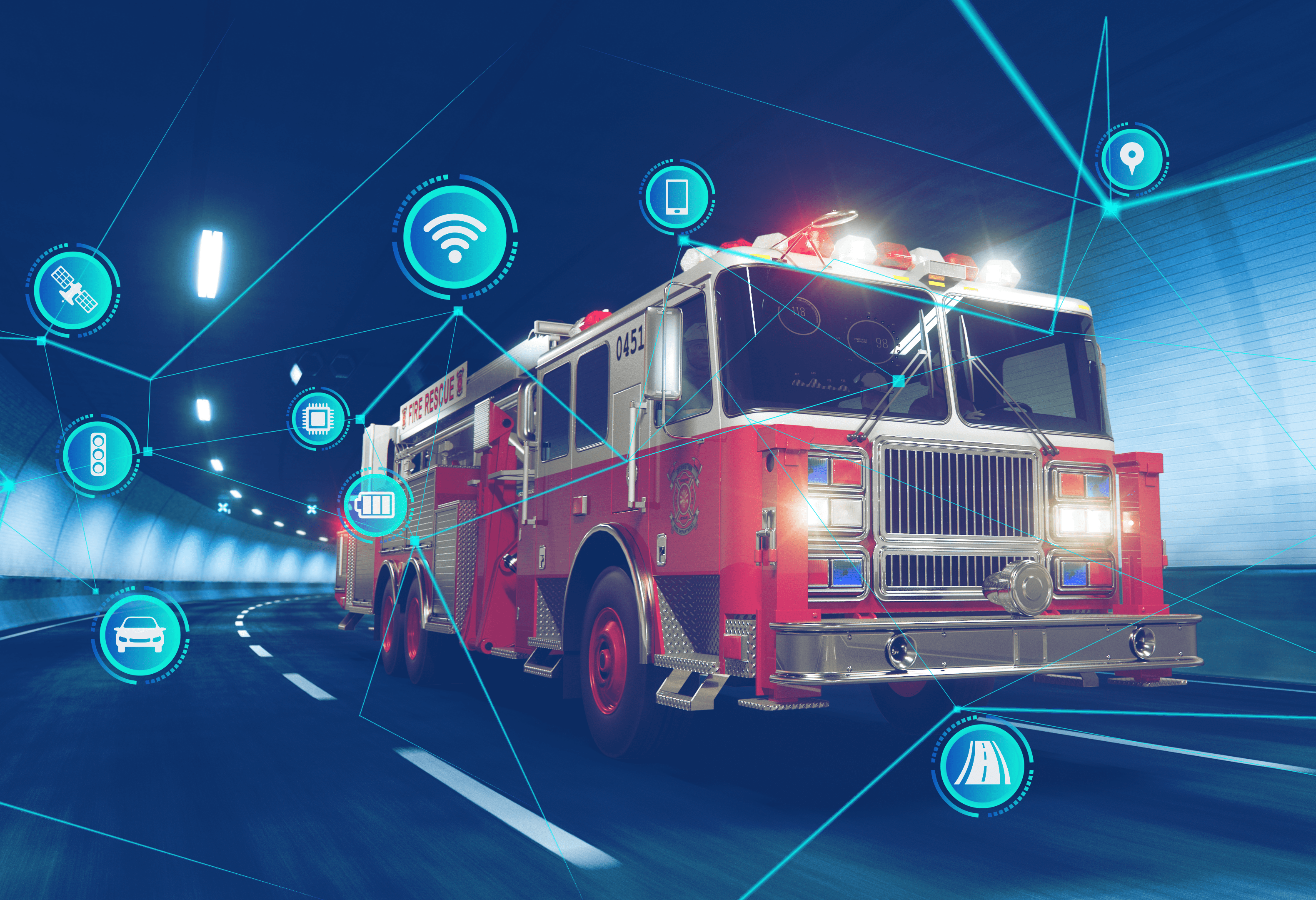Safer and Smarter Solutions for Emergency Vehicles

Keeping emergency vehicles safe on the road is serious business. Here’s a closer look at some of the trends that are keeping front liners safe on the road and on the job.
The National Safety Council (NSC) says that one hundred and eighty people died in emergency vehicle crashes in 2020. This means that people who were already on the way to the hospital and people on the way to help other people have died. In the United States, accidents involving emergency vehicles such as ambulances and fire engines are fairly common, with 6,500 crashes occurring every year. Pedestrians account for about a quarter of these accidents. Fire engine crashes second-leading cause of on-the-job casualties for firefighters.
These numbers may be surprising to the ordinary person, but these numbers are facts indicating that a lot of work needs to be done to improve the safety conditions of front-liners as they move through the city to perform their jobs.
The largest risks for emergency vehicle operators and drivers are not complex—having to navigate bustling streets at top speed, road and weather conditions, having to drive at nighttime, foot and vehicle traffic, and high-risk situations; sometimes all occurring at the same time.
However, what’s somewhat surprising is that studies have found that crashes are most likely to occur at slower speeds, and the reasons behind this are poor roadside visibility, and blind spots.
The biggest and most important factor contributing to the overall safety of deployed emergency vehicles is communication. In an occupation where time is of the prime essence, being able to communicate needs efficiently between the emergency vehicle and its surroundings is vital to keeping everyone safe until the emergency has been controlled. For example. if pedestrians, cyclists, and other motorists are aware of an emergency vehicle coming their way, this could reduce incidents of accidents and collisions on the road.
Technology comes to the rescue with innovations that address these main issues for the emergency sector. Today, improvements and innovations have been made for visual and navigation issues, and more importantly, communications for emergency vehicle safety.
See more clearly, move more safely
Today, 4-camera technology is available for emergency vehicles. These safety camera systems are designed to help the operator or driver to keep a closer eye and be more aware of blind spots as well as other vehicles in their immediate vicinity. This specially-made camera system helps the driver maneuver tight, difficult bends by providing a 360-degree view of the vehicle in one image. Combining images from four ultra-wide-angle cameras, this is displayed on the driver’s monitor in real-time.
Apart from camera technology, recording capabilities and sensors augment these safety features.
Through ultra-sonic sensors, emergency vehicle drivers can detect objects, whether stationary or moving. Ambulances and fire engines will greatly benefit from being equipped with sensors that alert the operator or with an alarm or warning when the sensors detect objects or people at a certain distance.
Meanwhile, video recorders are beneficial when it comes to providing hard proof should an incident occur. Some emergency vehicles’ camera and video recording systems are equipped with 4-G cloud connectivity, allowing data to be live-streamed remotely via GPS tracking.

Communication is Key
The Fire Apparatus Manufacturers Association (FAMA) supports trends in technology that addresses the safety needs of emergency vehicles operating in the U.S. today. The group recognizes the many innovations that the emergency sector has incorporated through the decades—from sirens to lights, to other modern breakthroughs that have vastly improved response time to critical situations.
Here, the role of telecommunications is highlighted. From the introduction of emergency hotlines to more modern means of communication in this age of connectivity, the importance of speedy response to calls cannot be underscored enough.
With the rise of automated and autonomous vehicles, connectivity and communication are now more essential than ever. Cellular-connected vehicles are common in the U.S., and FAMA sees a need in improving connectivity between emergency vehicles not only with each other but with urban infrastructure as well.
(Also read: The Rise of Self-Driving Vehicles)
V2X technology just might hold the key to improving the safety of emergency vehicles. A relatively new technology, V2X is a communications system for vehicles that supports the transmission of information from the emergency vehicle to other parts of the traffic system around the area.
Companies such as Audi have been exploring the possibilities of V2X technology to improve their products. However, before V2X hits the consumer base, it’s more important for emergency vehicles to get with this program.
V2X offers longer-range communications between vehicles, which means that if ambulances and fire engines are equipped with this technology, operators can move through the busiest streets with more ease, and less risk of collision incidents because other motorists, cyclists, and pedestrians are alerted ahead of time via stoplights and other connected road or raffic signals.
This technology also supports autonomous or self-driving emergency vehicles, which are quickly becoming the norm in many cities. V2X detects what other conventional sensors can’t, and it leverages LTE signals that do not rely on conventional cellular networks. This becomes very helpful when circumstances such as bad weather might interfere with other types of sensors.
While still in its infancy, V2X offers vast potential in improving the safety of emergency vehicles operating today. Scientists are predicting more advancements in V2X will be uncovered in the next twenty years as e-cars and autonomous vehicles grow in demand. Support for smart and cloud-based technology in urban infrastructure should allow for these innovations to fully integrate and be taken advantage of.
As one of the Top 19 EMS companies in the world, IMI has over 40 years of experience in providing electronics manufacturing and technology solutions.
We are ready to support your business on a global scale.
Our proven technical expertise, worldwide reach, and vast experience in high-growth and emerging markets make us the ideal global manufacturing solutions partner.
Let's work together to build our future today.




